How to boost Instagram impressions and reach in 2026

Table of Contents
Instagram impressions are no more. However, the idea behind them lives on and should still factor into your Instagram marketing strategy.
In 2025, Instagram retired impressions and renamed them “views.” Since Instagram didn’t completely omit this measurement, it clearly serves a purpose.
Though most marketers consider Instagram impressions a vanity metric, Instagram views help you understand visibility and how it translates to ROI.
Let’s explore the link between views and ROI so you can go beyond the basics and use them to shape your Instagram plan in 2026.
What are Instagram impressions?
Instagram impressions measured the total number of times your content appeared on someone’s screen, whether it was a post, Story or Reel.
Unlike reach, which only tracks the number of unique accounts that saw your content, impressions showed how often users viewed it, including repeat views from the same person.
Today, views serve as the go-to metric for gauging how often audiences watch your content.
Pinpoint Instagram success with Sprout Social
Sprout’s comprehensive Instagram features can help you get a handle on your social success.Break down what’s working and what’s not through our message- and channel-level reporting and schedule out your content calendar in advance.
Try out these features and more with a 30-day free trial and see how Sprout can streamline your Instagram efforts.
How Instagram measures impressions and reach
Before 2025, impressions and reach looked similar on the surface but told marketers different things. Here’s a closer look at each:
- Reach measures unique viewers and shows how many individual accounts saw a single piece of Instagram content, whether a post, Reel or Story.
- Impressions captured the total number of times a user saw that content, meaning the same user could contribute multiple impressions.
However, Instagram counted impressions differently depending on the format:
- In the feed, impressions registered when a post appeared on someone’s screen while they scrolled.
- In Stories, impressions only counted if the person actually tapped into the Story.
- In Reels, impressions included autoplay starts or multiple replays by the same user.
This inconsistency made it difficult to compare performance across formats.
By shifting to views, Instagram standardized the measurement. Now, Instagram views only register when someone actually watches your content. So while reach still tells you how many unique users are served your content every day, views now tell you how often users consume that content. Together, these Instagram metrics highlight both breadth (reach) and depth (views) to evaluate visibility and engagement more accurately.
Understanding how Instagram metrics have changed and what to track now
Since Instagram replaced impressions with views, it’s more important than ever to understand how each metric works.
While they may look similar, each measures different sides of your social media marketing strategy’s performance. For example, if five people watch your Instagram post twice, your reach is five, but your views are 10.
To make it easy, here’s a quick side-by-side comparison:
| Metric | What it shows | Why it matters |
| Reach | The number of unique accounts that saw your content | Indicates brand visibility and audience size |
| Impressions (obsolete in 2025) | The total number of times your content appeared, including repeats | Showed depth and frequency of exposure |
| Views (new) | The number of times people watch content across feed posts, Stories and Reels | Provide standardized insight into consumption |
| Engagement rate | Interactions (likes, comments, shares and saves) divided by reach, views or followers | Shows how effectively your content drives action |
Now, let’s explore these metrics in detail, including what they tell you about performance:
Instagram impressions
Instagram impressions showed how many times your content, whether a post or a story, was displayed to users.
Although commonly confused with reach, impressions captured total views, including repeats. If they were higher than your reach, it meant your audience viewed your Instagram content multiple times. Individual posts with a high impressions-to-reach ratio revealed what was performing well.
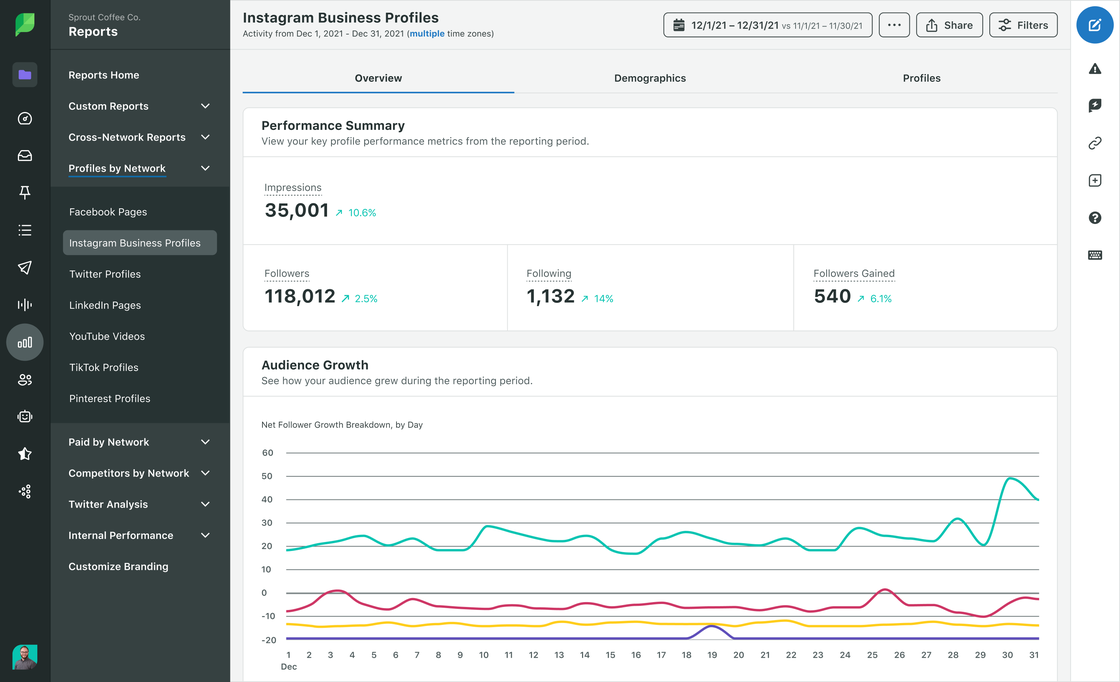
But as of April 2025, you won’t find impressions data in your Instagram profile or creator account. This metric has been replaced by views, which offer a standardized way to track consumption across formats like Reels, Stories and carousel posts.
Instagram views
An Instagram view registers when a user actually watches a piece of content, whether that’s a feed video, a Story, an Instagram Reel or even live video. Unlike impressions, views are consistent across formats, giving marketers a reliable benchmark for visibility.
You can find views directly in Instagram Insights or through analytics tools like Sprout Social. Comparing views to reach helps you determine whether you’re simply hitting a wide target audience or driving repeat consumption from your Instagram followers.
Views are also critical for evaluating ad performance since they tie into ROI-focused metrics like cost per mille (CPM), the price you pay for every 1,000 post impressions or views. Tracking CPM alongside conversions helps you understand whether your Instagram ads are efficiently delivering visibility and driving measurable business results.
Instagram reach
Instagram reach is the number of unique users who saw your Instagram post or story on any given day.
Unless you’re putting some serious spend behind your posts, it’s unlikely every one of your followers will see your content, which is why reach is a critical visibility indicator. The higher your reach, the more effectively you’re growing brand awareness and connecting with new audiences.
Instagram engagement rate
Instagram engagement rate is your post engagement divided by post impressions.
Engagement rate is a must-track metric for social marketers as it indicates how engaged the users who saw your posts were. Breaking down your Instagram engagement rate by media type helps you see if your audience is more likely to engage with photos, videos or carousels.
Over time, engagement rate can tell you how one campaign or messaging strategy performs vs. another. It’s a great metric to track as you test new approaches.
In 2025, practitioners often calculate engagement in three main ways:
- By views: This method is best for Reels, Stories and videos. To find it, divide interactions by views to see how engaging your content is once people watch it.
- By reach: This metric works well for organic campaigns. To use it, divide interactions by unique accounts reached to measure effectiveness with new viewers.
- By followers: Tracking engagement this way helps you assess influencer campaigns and long-term strategy. To benchmark your overall audience activity, divide interactions by followers.
Instagram saved posts
Saved posts are a measurement of the number of users who saved your posts.
Source: Instagram
As the name implies, saved posts give users the option to save a post to reference in the Saved section of their profile later. They’re great for extending the life of your Instagram posts, as users revisit saved content months after you originally posted it.
Instagram Stories metrics
Instagram Stories have been a great addition to social marketers’ content toolkit, most notably for the different ways they drive engagement.
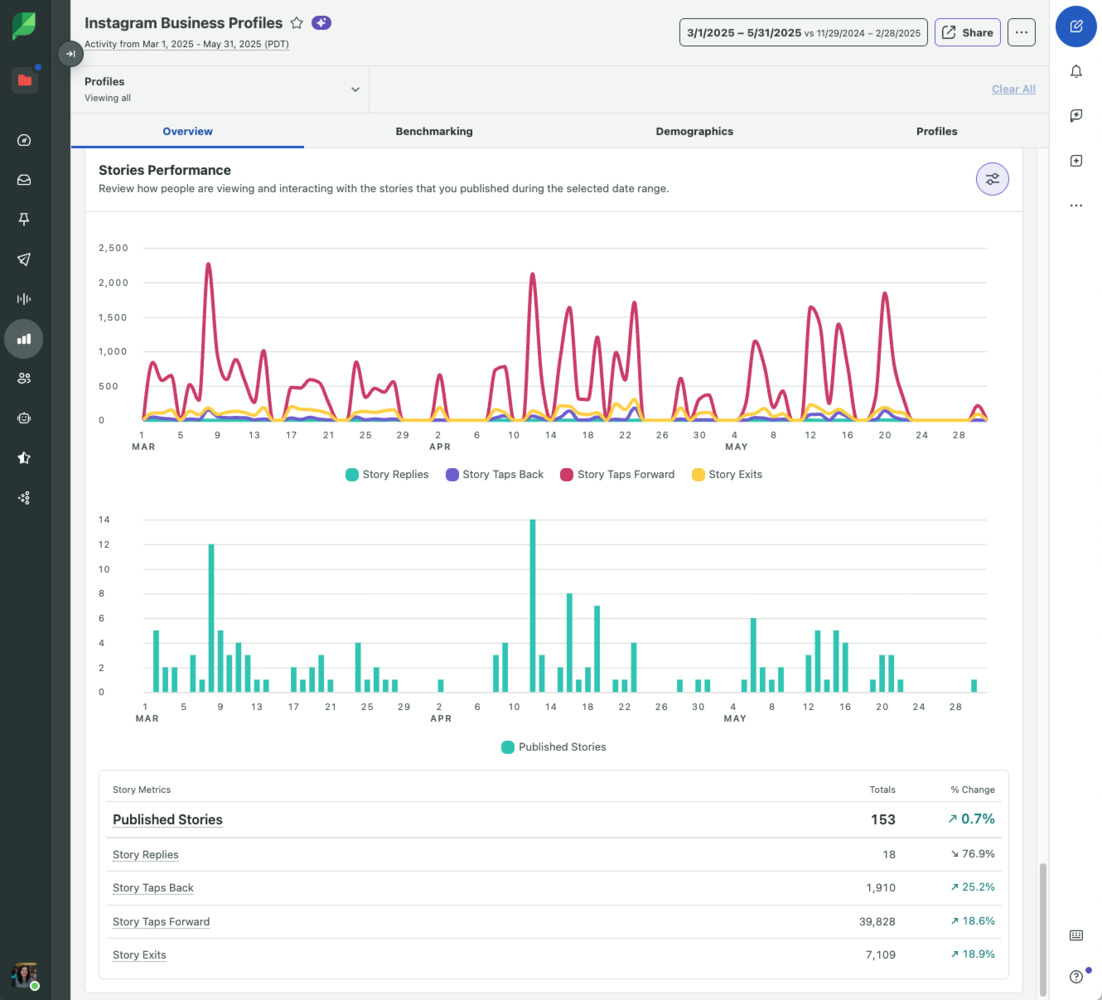
Here are Story-specific terms that serve as key metrics you’ll want to keep track of:
- Taps backward: The number of times your audience tapped back to go to a previous story. This may mean your content was engaging enough that the user wanted to see it again. However, it could also be a sign that any copy you’ve included in your story is too long to read in the time given.
- Taps forward: The number of times your audience tapped forward to go to the next story. This can be an indicator of your story not resonating with your audience or being too lengthy, if it’s a video. Review the stories with the most number of taps forward to identify common themes, like length, copy or content.
- Replies: The number of times a user swipes up on a story and replies to you. Replies can be a goldmine—users who reply to stories may be passionate about your brand and have great feedback to share. Replies will begin a DM conversation between you and the user, so they’re great for engaging with your audience.
- Exits: The number of times a user swipes down to exit out of story mode and go back to the previous screen. An exit means a user has decided not to make it all the way through your Stories. You’ll want to keep this number low.
How to find your Instagram views
Unsure how to see your views on Instagram? It’s easy—you just need to know where to look. Whether you rely on the built-in Instagram Insights or advanced analytics tools like Sprout, the right data helps you understand your Instagram performance and prove ROI.
Here’s how to find your views with each of these two tools.
How to find Instagram views using Instagram Insights
Open your Instagram profile and tap the menu in the top corner. From there, select Insights.
Source: Instagram
In the Content You Shared section, you’ll see performance metrics for individual posts, Stories, Reels and live videos.
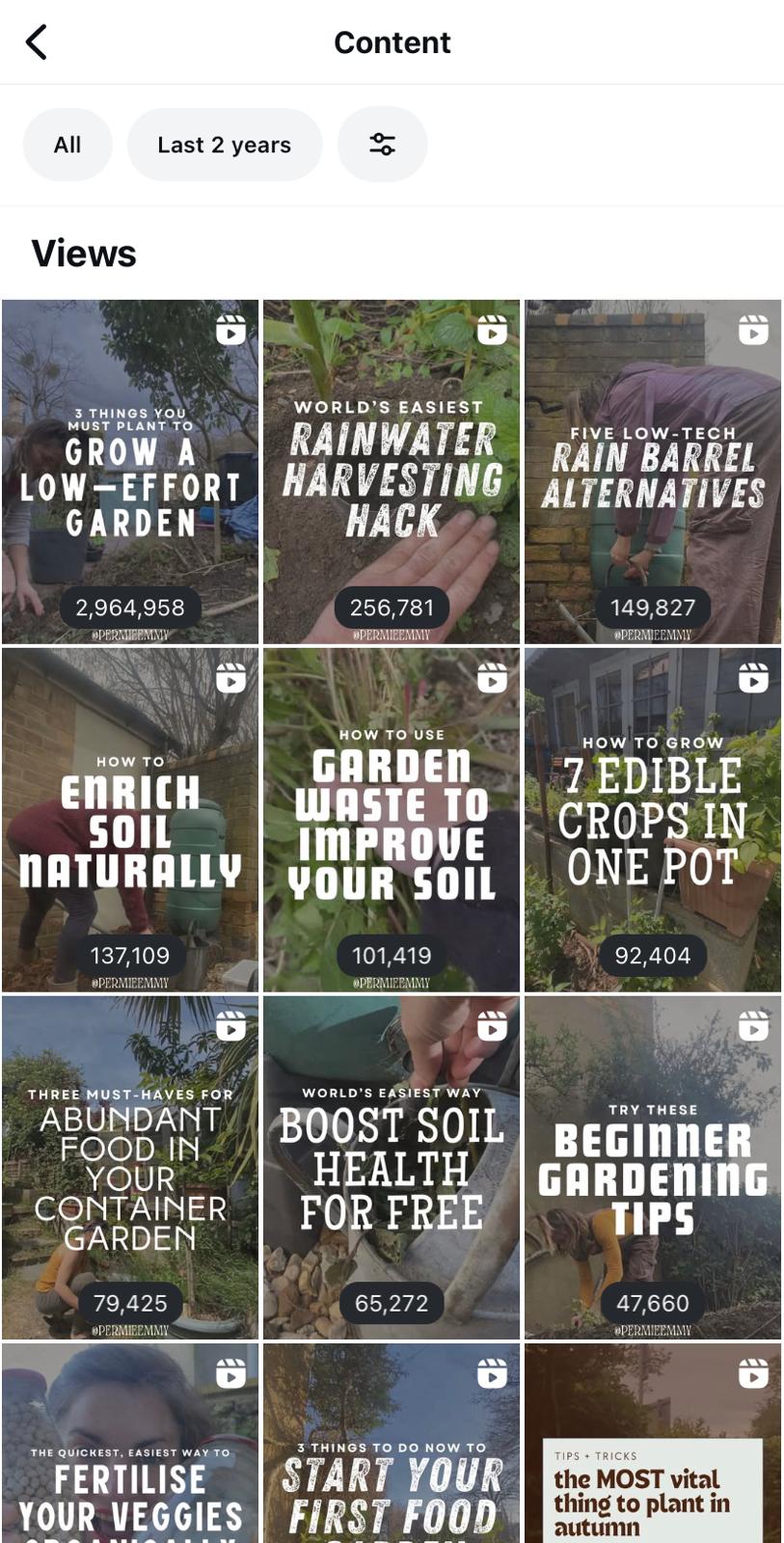
Source: Instagram
By clicking each piece of content, you’ll see its views, along with reach, profile visits and other key metrics.
Source: Instagram
How to find Instagram views using Sprout Social
Instagram Insights gives you the basics, but Sprout’s Instagram analytics tools let you dig deeper into why your numbers look the way they do.
To see your views and other performance metrics in Sprout, head to Reports > Cross-Network Reports > Instagram Business Profiles. Here, you’ll find views, reach and other key metrics by individual post, Story, Reel and campaign.
What makes Sprout more powerful than Instagram Insights is its ability to add context.
Here’s how to use Sprout to get a better understanding of what your views mean:
- Tag content by theme—such as product launches, seasonal campaigns or hashtag challenges—to see which content drives the most views or repeat watches.
- Use Listening Topics to check if a drop in your Instagram views matches a broader industry slowdown or a shift in competitor activity, helping you separate internal issues from external trends.
- Dive into audience demographics and behaviors to see which segments rewatch your content most often and adjust your content strategy accordingly.
This level of analysis turns raw data into actionable insights. It also helps you understand why your content performs the way it does and what to do next so you can optimize your Instagram marketing strategy and tie visibility directly to Instagram ROI.
Why Instagram impressions and views matter for brands
For any Instagram account, tracking views goes far beyond basic definitions. This important metric helps social media managers prove ROI, understand content performance and optimize campaigns.
Here’s why it’s essential to measure and analyze your views.
Measure brand awareness
The balance between Instagram reach and views has always been central to tracking brand awareness. While reach shows how many unique accounts see your Instagram content, views reveal how often your brand message circulates. Comparing the two helps you understand whether people return to watch your content again.
When audiences rewatch your content, it signals stronger interest and reinforces your brand presence.
Evaluate content performance
Comparing views on individual posts shows which formats resonate most with your Instagram followers and the Instagram algorithm. This insight helps you refine your content strategy and double down on what drives engagement. For example, if Reels consistently outperform static posts, that’s a signal that it’s worth investing more in short-form video.
Optimize your ad spend
For paid campaigns, views are the foundation of ROI because they let you tie delivery metrics directly to conversions. By tracking CPM and post views together, you can see if your Instagram ads efficiently reach the right audience and generate measurable results worth the spend.
6 strategies to increase your Instagram impressions and views
Growing visibility on Instagram is about building habits that help your content strategy reach more people more often.
Try these six strategies to expand your reach on Instagram and gain repeat views while aligning with the Instagram algorithm:
1. Create high-quality, shareable content
The more people save and share your Instagram content, the more the algorithm rewards it with visibility.
According to the Sprout Social 2024 Social Media Content Strategy report, short videos, especially clips under 15 seconds, generate the highest engagement, which increases the chance that people will share them. Because of this, it’s smart to prioritize formats like Instagram Reels and short Instagram Stories.

Beyond format, also consider the kind of content your audience loves to share. For instance, educational or edutainment posts, those that spark laughter or posts that tap into relatable cultural moments tend to spread quickly.
2. Master your Instagram hashtag strategy
Hashtags are still a powerful way to reach users beyond your current Instagram followers. To take advantage of them, mix community-focused hashtags with industry-specific and trending ones to make your individual posts discoverable to new and niche communities.
3. Post consistently at optimal times
Consistency keeps your Instagram profile active, but timing drives momentum. To increase the likelihood of early engagement, post when your target audience is most active. The Instagram algorithm uses early engagement to decide how often to show your content to others.
Sprout’s Optimal Send Times eliminates guesswork around when your audience is most active by analyzing historical engagement data. It leverages patented, AI-powered ViralPost® technology to provide data-backed recommendations on when your content is most likely to drive engagement.
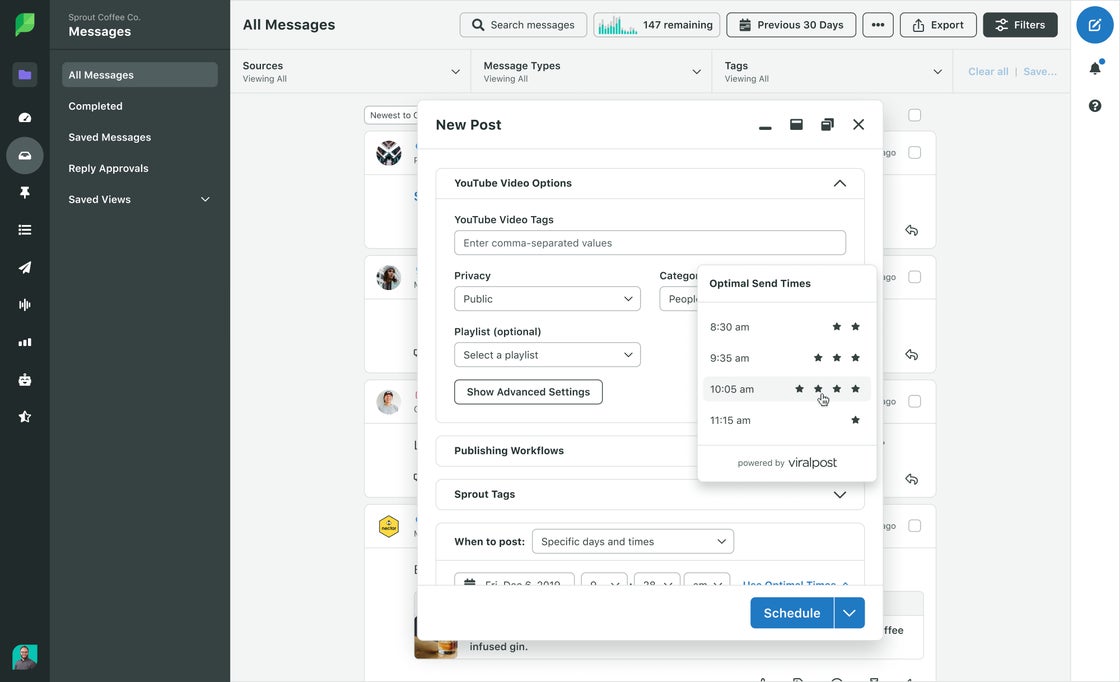
4. Leverage trending formats and topics
Instagram prioritizes accounts that adopt its newest features, so jumping on trending Reels formats, sounds and topics can help give your content a boost on the Explore page.
But remember to stay strategic by choosing trends that fit your brand voice. As the 2025 Sprout Social Index™ shows, while most people think it’s good for brands to jump on trends, a third find it embarrassing. To prevent cringe from setting in, make sure your trends align with your audience.
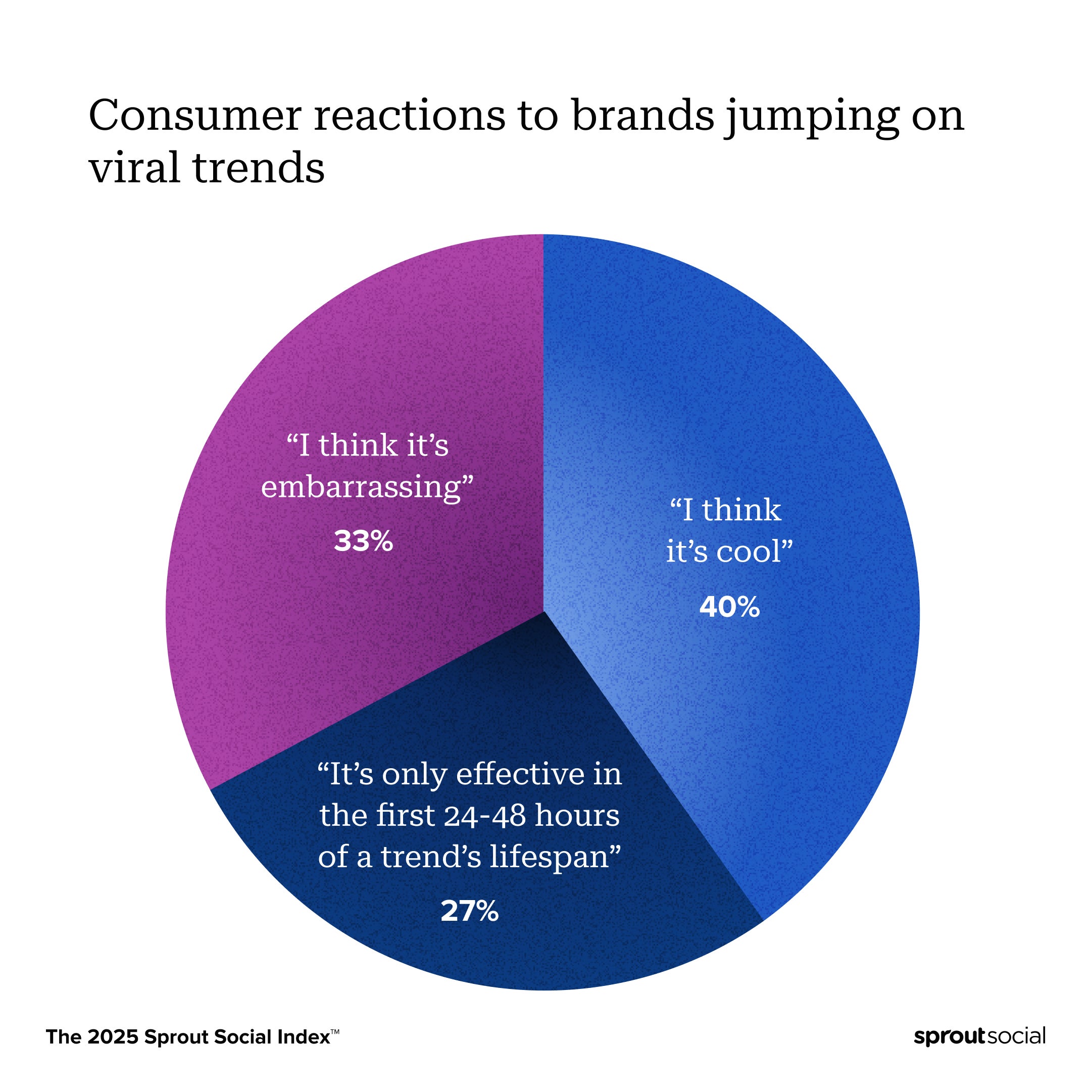
To spot relevant trends early, try using social listening tools. These tools scan conversations across social media to show you which topics, hashtags and formats your target audience engages with most. Filtering results by industry, competitors or keywords can help you uncover opportunities before they peak.
5. Engage with your community
By replying quickly to comments, DMs and Story replies, you show Instagram your business account is active and valuable.
But engaging with your community isn’t just important for the algorithm. According to the Index, how and how fast you respond are two of the most important factors that make your brand stand out. Strong community engagement leads to more profile visits, builds relationships and ultimately encourages more repeat views.
6. Cross-promote on other channels
There’s no reason to limit discovery to Instagram alone. Sharing your Instagram Reels, Stories and individual posts across Facebook, LinkedIn, TikTok and even email is a smart way to drive traffic back to your Instagram account.
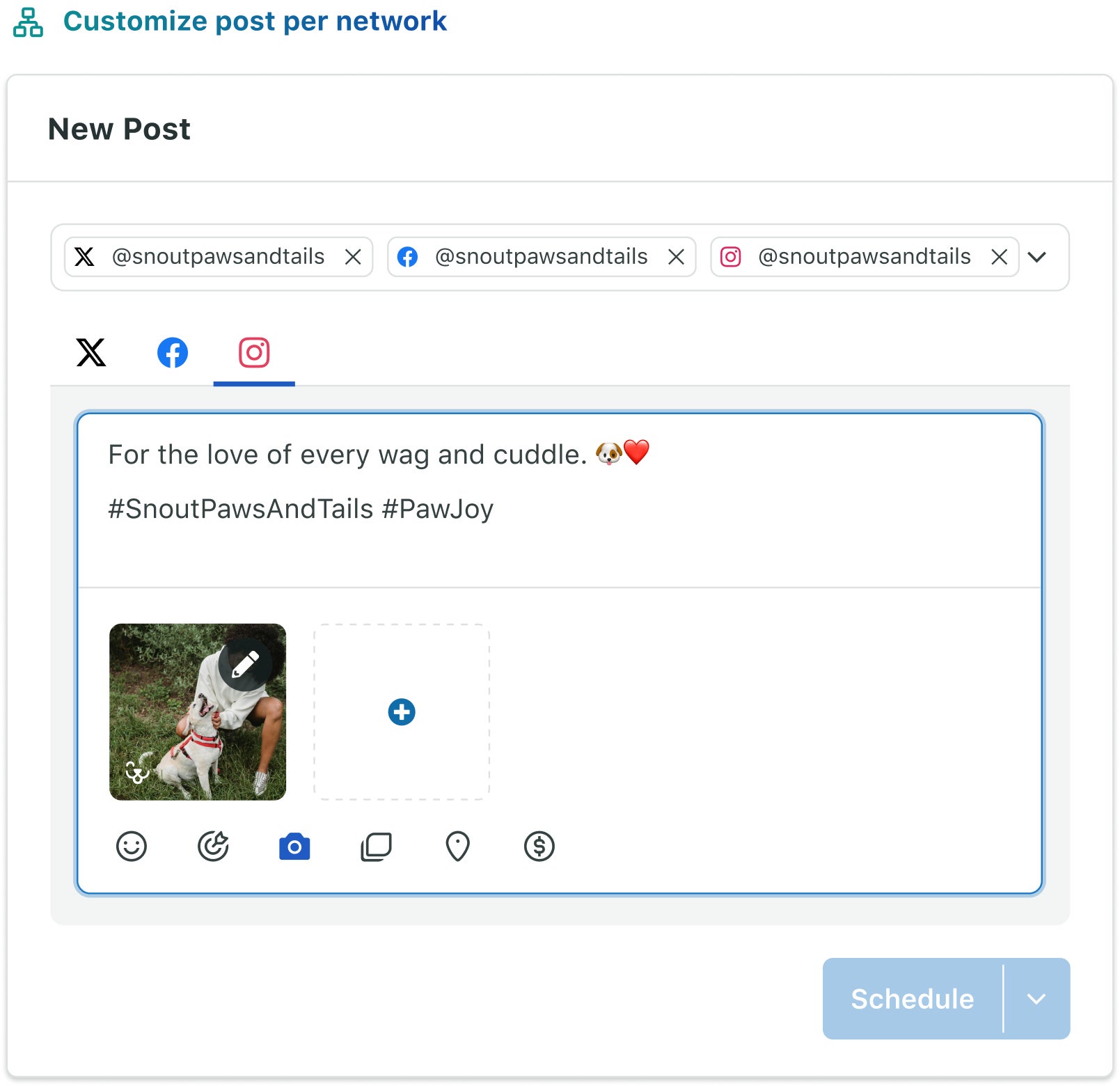
Juggling content across multiple social networks can be tricky. Sprout makes it easier to customize and schedule posts for each network. You can personalize captions, visuals and hashtags for every audience while keeping your publishing calendar in sync.
How to diagnose a drop in Instagram views
Even strong Instagram accounts see sudden dips in views. The key to recovering is spotting why it happened and acting fast.
Here are some of the main reasons for drops in views and how to figure out what’s happening.
Common causes of Instagram views drop
If your Instagram views are falling, the most likely culprits include:
- Algorithm changes that shift what’s prioritized in feeds and on the Explore page
- Creative fatigue from repeating the same formats, themes or visuals
- Reduced posting frequency or inconsistency in your content calendar
- Audience shifts in interests, demographics or network behavior
How to investigate with analytics
To solve these issues using analytics, start by evaluating the scope of the problem:
- Check if the drop affects all formats or just Reels, Stories or carousel posts.
- Compare current individual posts with past high performers to pinpoint differences.
- Look at whether your Instagram followers are still active at the times you’re posting.
You can review all these details using post-level data in Instagram Insights. For a deeper look, you can pull format and timing reports in Sprout Premium Analytics.
Once you understand where the problem lies, layer in a deeper analysis:
- Tag content by theme to see which groups underperform.
- Track views, reach and engagement rate across campaigns to identify dips.
- Use Listening Topics to determine if the decline is industry-wide or topic-specific.
If the drop affects only your content, try adjusting your creative style or cadence. If it reflects a network-wide change, tweak your content mix, such as posting more Reels or leaning into trending formats.
Turn visibility into impact with Sprout
Instagram views aren’t just a vanity metric. They reveal how often people consume your content and how that drives engagement and conversions. To improve ROI, you need to know what’s earning views and why.
Sprout Premium Analytics and Listening Topics help you dig deeper into your Instagram data. They let you see which campaigns, formats or themes spark repeat views, connect visibility to engagement and uncover industry trends shaping performance. These insights provide ways to drive more views, grow brand awareness and demonstrate ROI.
Ready to see how Sprout offers a complete picture of Instagram performance? Request your free demo.
Instagram impressions FAQs
What is the difference between impressions and reach on Instagram?
Reach measures how many unique accounts saw your content, while impressions counted the total views, including repeats. In April 2025, Instagram replaced impressions with views.
Why are my Instagram impressions so low?
Drops often stem from algorithm updates, posting inconsistencies or content fatigue. To diagnose the issue:
- Step 1: Check if the drop affects all formats or just Reels, Stories or carousels.
- Step 2: Compare recent posts with past top performers to spot what changed.
- Step 3: Review when your followers are most active and adjust posting times.
- Step 4: Tag and track content by theme or campaign to see what underperforms.
- Step 5: Use Listening to confirm whether the decline is specific to your account or part of a wider trend.
Once you identify the cause, adjust your creative style, timing or format mix to rebuild momentum.
How can I increase my Instagram impressions?
Focus on shareable Reels, consistent posting at optimal times and engaging with your community. To understand what’s working, track views and use trends, hashtags and cross-promotion to boost visibility and encourage repeat watches.
Do Instagram ads count toward impressions?
Yes, ads contributed to impressions before 2025. Today, they count toward views.
How often should I track Instagram impressions?
Back when impressions existed, weekly tracking was best for spotting patterns. Now, monitor views regularly: daily for campaigns and weekly for trends. This approach helps you detect shifts early and optimize your strategy.
How does Instagram count impressions?
Impressions used to count each time content appeared, even for repeat exposures. In April 2025, Instagram replaced impressions with views, which only count when someone actually watches content.

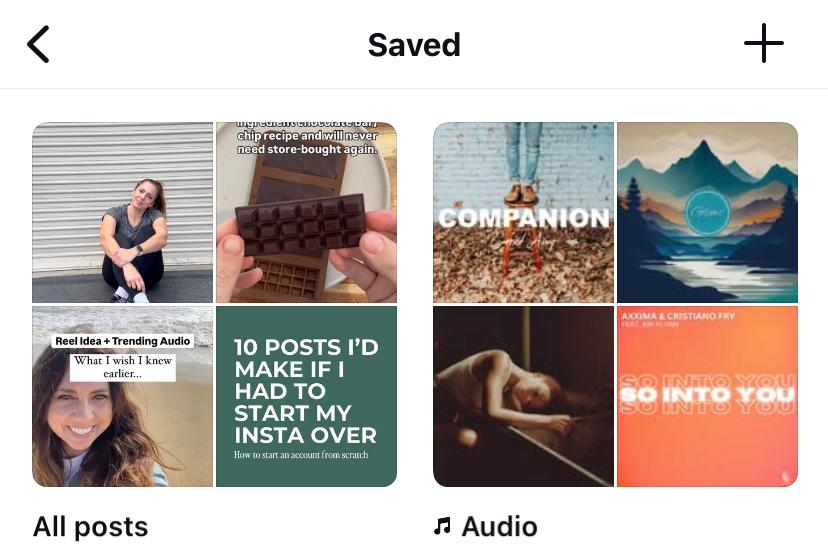
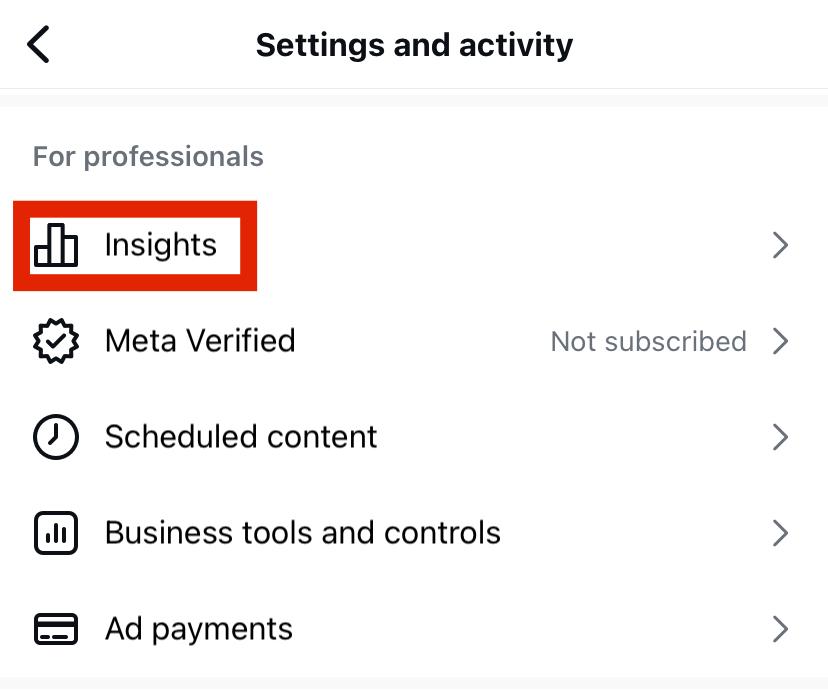
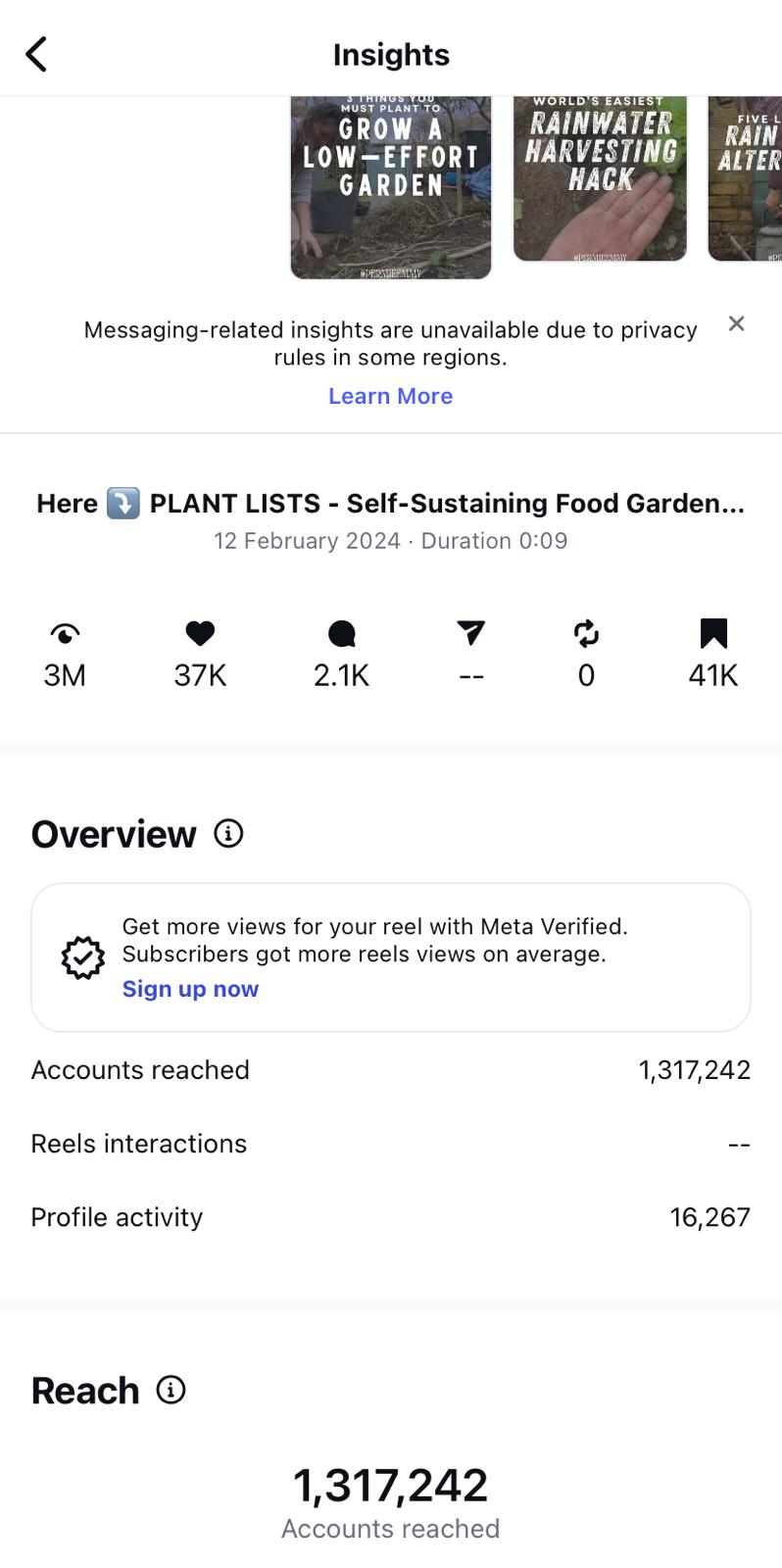

Share